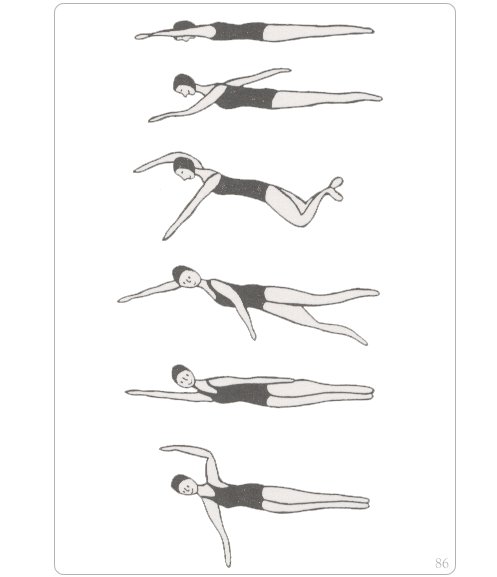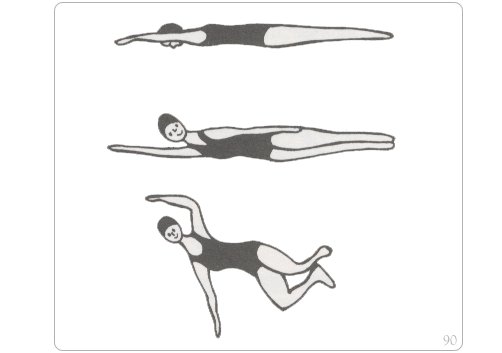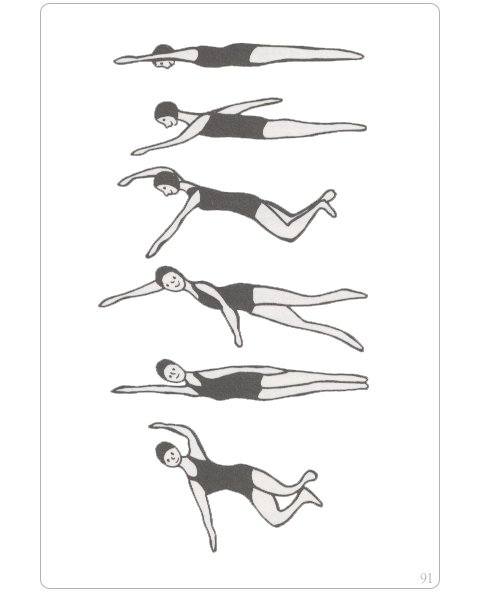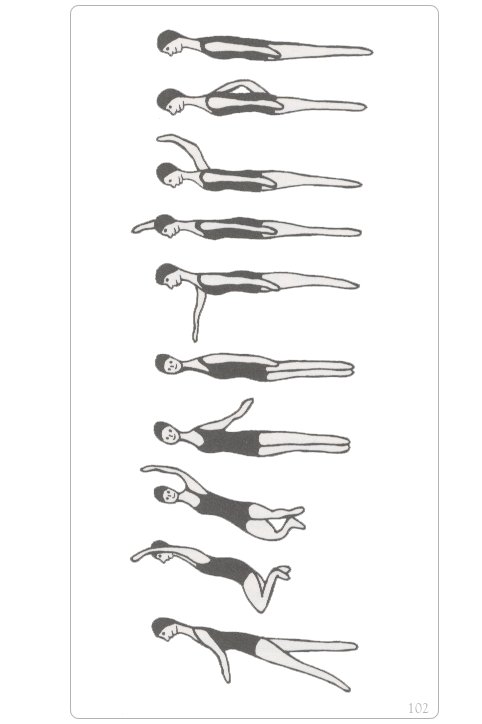PS: Swimming-strokes which are shown in bold
are being discussed on this page.
|
|
|
|
| FRONTCRAWL | ||
|
PS: Swimming-strokes which are shown in bold |
||
|
|
|
|
| Legend: |
|
|
* |
= a difficult swimming-stroke to swim or impractical |
|
|
 |
|
|
||
|
|
This swimming-stroke looks a lot like the frontcrawl. The body position is rolling which means that the body moves from a horizontal position to the side in a vertical position. A full pull through is made by both arms. Furthermore, the legstroke is, as we call it, a modified frog-kick. Combination: long 
|
|
|||
|
|
|
|
|||
|
|
 |
|
|
||
|
|
This swimming-stroke looks like the long Spanish stroke where the body position is rolling from a horizontal position to a vertical position on the side. The arms make a double overarmstroke which means that the trailing- and the leading arm making a full pull-through. The legstroke is a modified scissor-kick. The combination of the arms and legs is long and the gliding-period is long (about two seconds). 
|
|
|||
|
|
|
|
|||
|
|
|
 |
|
|
|
This swimming-stroke looks like the long Spanish stroke. The body position is a stable position on the back and the legstroke is a frog-kick. With the single Spanish backstroke one frog-kick is made and with the double Spanish backstroke two frog-kicks are made, one on each side. |
|
|
|
|
|
|
|
|
|
|
 |
|
|
|
This swimming-stroke looks like the long Spanish stroke where the body rolls from a vertical position (90°) on the side to a horizontal (0°) position on the breast. The combination of the arms and legs is semi-long. This is a difficult swimming-stroke to swim. That is why it got rated at 6 on a scale of 10. Click here to see a graphical representation of this swimming-stroke... |
|
|
|
|
|
|
|
|
|
 |
|
|
|
|
Looks like the long Spanish stroke but with a short gliding-phase on the chest. The combination of the arms and legs is short.  |
|
|
|
|
|
|
|
|
|
|
 |
|
||
|
|
Looks like the long Spanish stroke. The combination of the arms is short and long where a legstroke is made with every arm when it is pulled through. A gliding-phase is followed when one swims on the side and on the chest. 
|
|
|||
|
|
|
|
|||
|
|
 |
|
|
||
|
|
This swimming-stroke looks like the long Spanish stroke where the arms make a double overarm(relay)stroke. The combination of the arms and legs is semi-long and a gliding-phase follows when on the chest with both arms down next to the body. 
|
|
|||
|
|
|
|
|||
|
|
 |
|
|
|
|
This swimming-stroke looks like the long Spanish stroke where the legs alternate a frog-kick. To be exact; a half frog-kick per leg. So, one leg is kept straight while the other leg makes a half frog-kick. |
|
|
|
|
|
|
|
|
|
|
 |
|
|
|
This swimming-stroke looks like the short Spanish stroke except with one legstroke per three or four armstrokes. Sometimes this swimming-stroke is swum without a legstroke. |
|
|
|
|
|
|
|
|
|
 |
|
|
|
|
Looks like the long Spanish stroke where the body position rolls from the chest to the side. The arms make a double overarmstroke and the legs make two modified frog-kicks. The combination of the arms and legs is double long, all followed by a short gliding-phase with two arms in front of the body. 
On the left; the first part of the swimming-stroke and on the right the second part. |
|
|
|
|
|
|
|